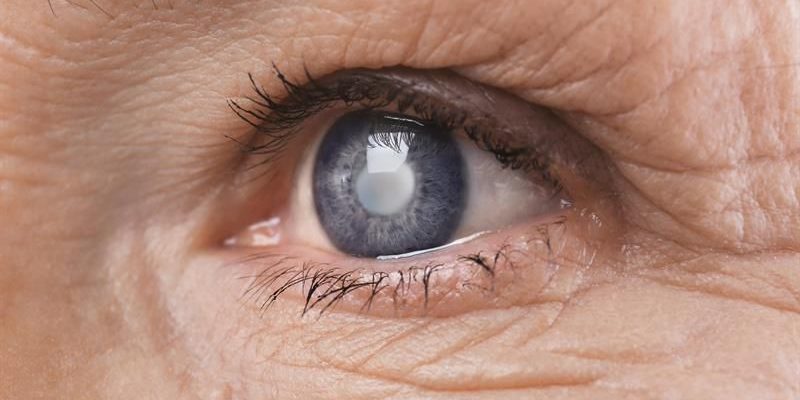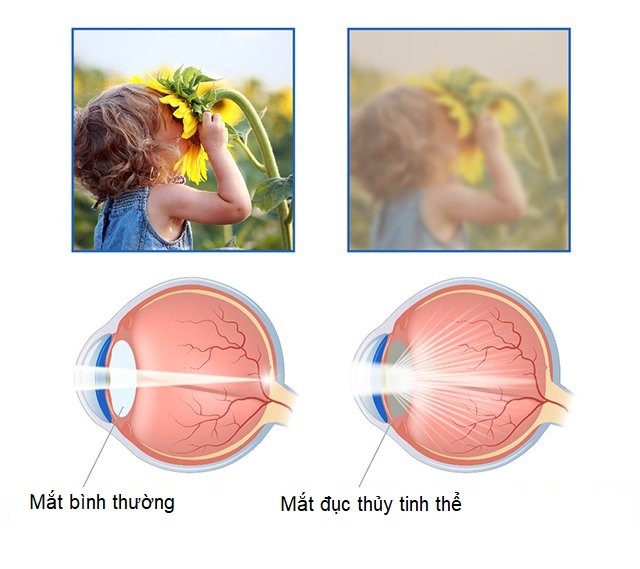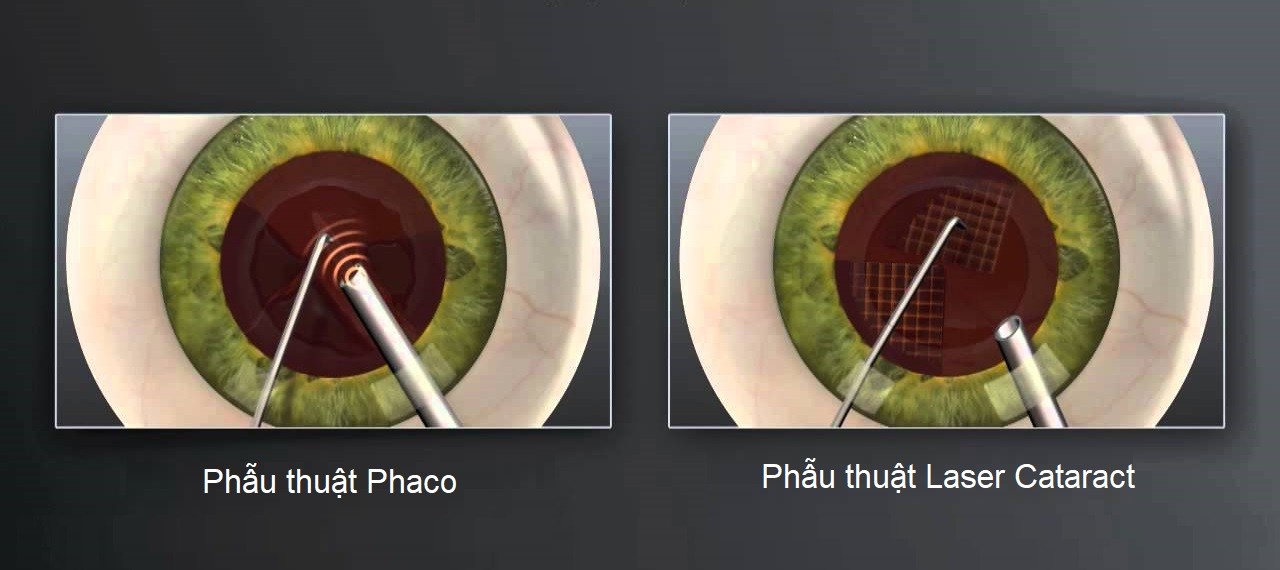Cataract
1. What is Cataract?
The lens (also called the eye nucleus) is a convex binocular lens of elasticity, consistency and transparency. The lens is located behind the pupil and acts as a lens to focus the light on the retina after passing through the pupil. Its elasticity and transparency decreases by ages, appearing cloudy yellow, also known as cataract.
Cataract is a condition of protein clumping, creating cloudy areas in the lens, scattering the light going through it, obstructing the light from reaching the retina causing impaired vision. If not treated promptly, it can lead to permanent vision loss. In addition, a mature cataract may cause glaucoma, redness, eye pain, and headaches. The patients then not only become permanently blind but also have to remove their eyeballs.

2. Cataract Symptoms
Most cataracts usually develop slowly. Symptoms may include:
- Eye’s sensitivity to light
- Increasing difficulty with vision at night
- Clouded, blurred, or dim vision, multiple vision in a single eye
- Fading of colors
- Un-improved vision with glasses
- Developed nearsightedness after 40 years old
- Loss of transparency in the pupil

3. Causes of Cataract
- Aging is the leading cause of cataracts. According to statistics, more than 80% of patients with cataracts are over 60 years old.
- Cataracts caused by diseases, typically diabetes, uveitis, retinal damage, etc.
- Congenital cataracts. It can be hereditary or due to an embryo defect during pregnancy.
- The lens is deprived of oxygen, resulting in damage to protein components. Its cause can be the following effects: exposure to direct sunlight, strong artificial light (such as spotlights, video lights, high pressure lights, etc.), or exposure with viruses, germs, alcohol, tobacco smoke.
- Exposure to ionizing radiation (commonly used to take x-rays, deliver radiotherapy to cancer patients)
4. Cataract Treatments
In case your cataract is in its early stage, you can improve your vision by wearing framed glasses. You also need to take periodic eye exams at a specialized facility to monitor its progression.
Cataract cannot be cured completely but may have its progression slowed down. In more severe stages, the radical treatment is to perform an artificial lens replacement surgery – cataract surgery.

Phaco Surgery
Phaco (Phacoemulsification) surgery is a process in which a cloudy lens is broken up with high-frequency ultrasound and then removed. It is then replaced with a suitable artificial lens to restore vision.
Laser Cataract surgery
Laser Cataract surgery shares the same cloudy lens breaking-up mechanism to remove it and replace it with a suitable artificial lens as the Phaco surgery. But its difference is that the Femtosecond Laser ray is used to replace certain manual operations, including creating an incision, creating a tearing line before the lens, supporting the breaking up of the cloudy lens.
